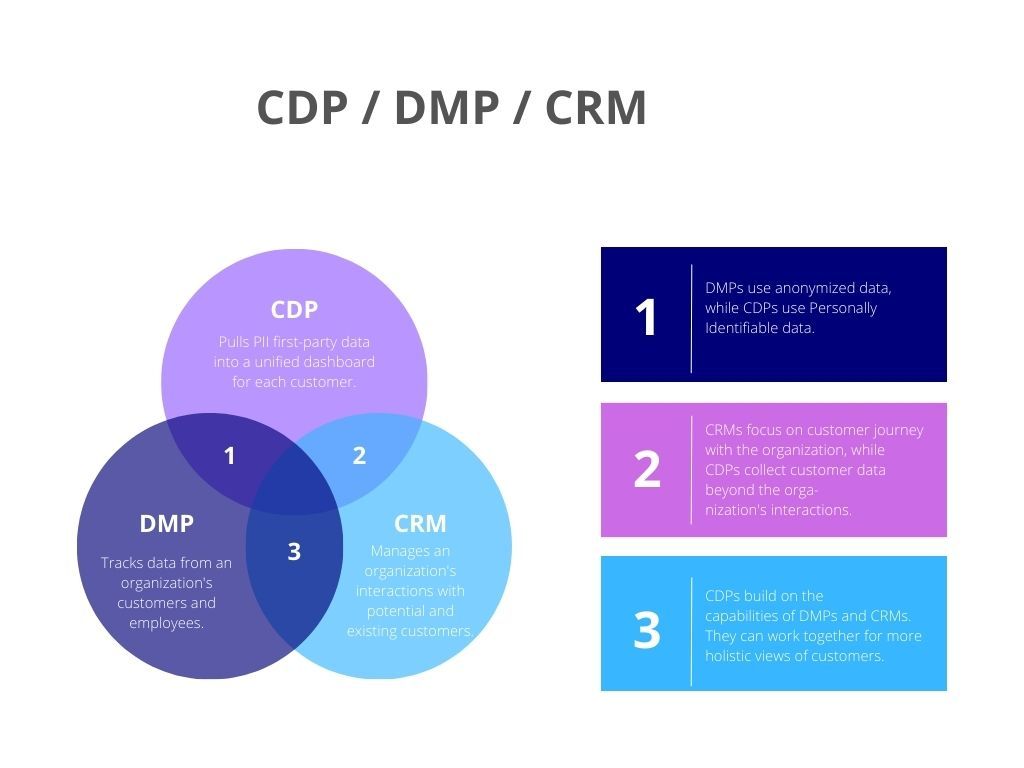Customer Data Platform (CDP) versus CRM and DMP
What is a Customer Data Platform (CDP), and how does it compare to other marketing technologies like CRMs and DMPs?

Sometimes it helps to describe what something is not. This technique is called the Via Negativa. So I will explain what a Customer Data Platform (CDP) is not and that will help you to place it into the marketing technology landscape.
What are CDPs not?
CDPs are not:
- Customer relationship management (CRM) systems
- Data management platforms (DMP)
I will explain the differences one by one.
Difference with CRM
Unlike CRMs, CDPs collect numerous types of data from different sources that require no manual maintenance.
CDPs focus on identifying segmented audience profiles to improve marketing strategies.
CRMs are typically managed by salespeople and typically contain data on customer transactions that are manually entered (e.g. filling in a form on a website) and then used to analyse the sales pipeline.
Moreover, CDPs can capture both online and offline data, while CRMs can only capture and report online data on known or potential customers.

CDPs versus DMPs
DMPs mainly aggregate third-party data based on cookies, while CDPs mainly analyse first-party data based on consumers' real identities. CDPs focus specifically on all aspects of marketing and are therefore considered a marketing technology tool, while DMPs are considered more of a technology platform for advertising because they focus specifically on improving the targeting of display ads.
Marketers still have an inordinate amount of data at their disposal, which is why CDPs are particularly useful. They can produce a unified data platform for marketers to improve customer journeys by combining data from sources such as web behaviour, mobile apps, social conversations, campaign activity, etc.



